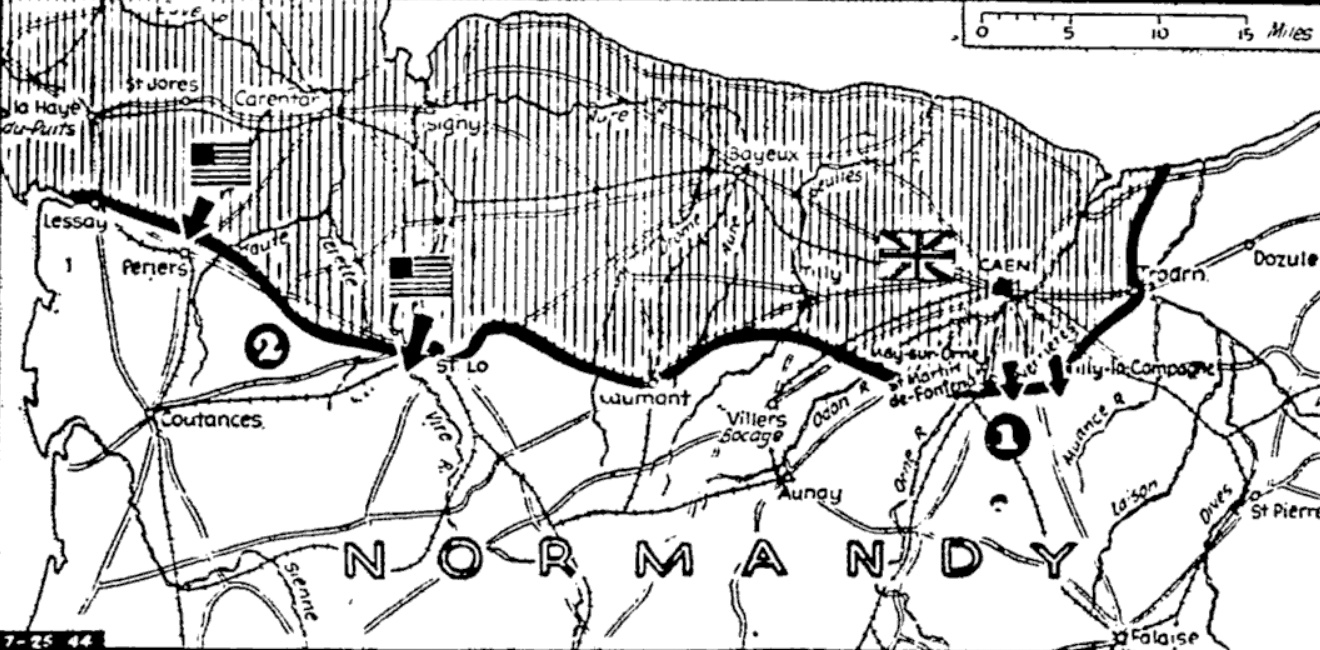Wolfert: Captured Axis troops fall into three main categories
But all share in war guilt through greed, apathy or by direct will
By Ira Wolfert
Saint-Lô, France – (July 22)
The German prisoners we are taking in France fall into three main divisions.
First there is the Nazi from the occupied countries and the greatest proportion come from Poland, Yugoslavia, Czechoslovakia, the Ukraine, White Russia, Georgia and the Baltic countries, however, are also represented.
Then there are the Germans who themselves seem to represent the “occupied” country, meaning old Germany and Austria. Last – and least – are the Nazis themselves: The Hitler Youth, the SS (Elite) troops and so forth.
The German High Command seems to be treating its subjected soldiers as it treats the Allies. Its Slavs, Czechs, Balts, Austrians and old-type Germans are treated as the Italians were treated in Africa. They are the expendables. They fight the rearguard actions when the gasoline is short, as it seems to be for the Germans here. They are given no gasoline with which to escape with their equipment. And when the shells are scarce, they are rationed very stringently among these members of the German armies.
Get puzzled look
Whenever we drive for anywhere these are the people we take first, and scattered among them, salting and firming them, are the proper Nazis – the hard, young, killer-type of men who have known no other adult life but one of war. These soldiers get a puzzled look when you ask them to think on what they have just gone through and see whether their idea of the glories of warfare is the same as the Nazi idea.
The fact that the old-type Germans – the non-politicals – are tired old men from a kind of Nazi-occupied country within Germany was made clear to me in numerous conversations I have had with prisoners, particularly during the last week when the fighting reached a considerable fury in this narrow sector.
What the Germans, which I saw taken, said was so nearly identical that they can almost be quoted as one. These Germans, on whom Nazification had not taken hold so deeply, are fed up with Hitler and the Nazis, but they do not know how safely to get rid of them. they are not yet desperate enough to turn their guns against the Nazis who have a hold on their heads.
They have no sense of guilt over having started the war, and, therefore, see no reason why any people should exact vengeance from them personally.
“We are a little people,” they say. I heard this continually in wheedling, whining tones. “What could we do about it?” They blame the death and destruction that has come finally to them too, along with the rest of the world, simply on the mysterious malevolence they refer to as the war, and not on Nazism.
The attitude of the incorrigible Nazis is still that the Führer cannot be wrong. They still insist there will be an offensive that will win the war for Germany, and soon there will be secret weapons suddenly unveiled – the Luftwaffe will rise again, there will be enormous guns, and then 10,000 years of Nazified peace.
Parrot-like tone
It is plain in most cases that the Nazis saying all this do not believe it themselves. What they are saying and talking by rote comes with a parrot-like tone in their voices and a blank look in their eyes.
It was odd to see these three types of Nazis come shuffling together out of the ruins of Saint-Lô. They, like the Americans who fought them there, hardly had heard of the town until a few weeks ago. Now Saint-Lô has been nearly levelled to the ground. The walls of structures that still remain stick up crazily like broken bones out of a pile of dead.
The Germans soldiers walked humbly along a road that smelled strongly of death. It was impossible to distinguish among the three types as they slogged along and it was hard to see why anyone should bother to distinguish among them. Whatever their plight at the moment, they had brought this on themselves and on the rest of the world.
It was they who had made the landscape gaunt – the non-German Nazis with their greed; the non-Nazi Germans with their apathy and tolerance of the Nazis; and the Nazis themselves by their direct will. They all seemed to be accomplices in the same terrible, shocking crime.

